
Henry Graham Greene was an English writer and journalist regarded by many as one of the leading novelists of the 20th century.
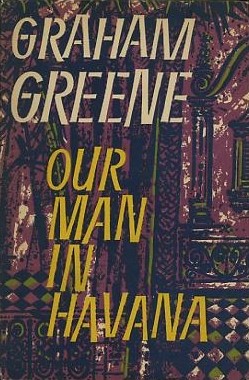
Our Man in Havana (1958) is a novel set in Cuba by the British author Graham Greene. Greene uses the novel to mock intelligence services, especially the British MI6, and their willingness to believe reports from their local informants. The book predates the Cuban Missile Crisis, but certain aspects of the plot, notably the role of missile installations, appear to anticipate the events of 1962.
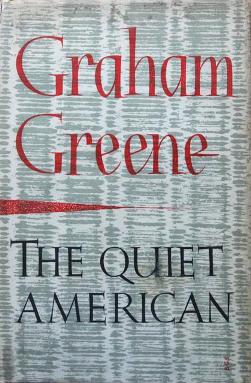
The Quiet American is a 1955 novel by English author Graham Greene.
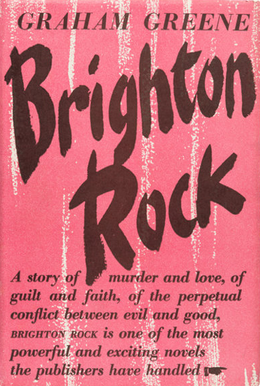
Brighton Rock is a novel by Graham Greene, published in 1938 and later adapted for film and theatre. The novel is a murder thriller set in 1930s Brighton. The first of Greene's works to explore Catholic themes and moral issues, its treatment of class privilege and the problem of evil is paradoxical and ambivalent.

The Third Policeman is a novel by Irish writer Brian O'Nolan, writing under the pseudonym Flann O'Brien. It was written in 1939 and 1940, but after it initially failed to find a publisher, the author withdrew the manuscript from circulation and claimed he had lost it. The book remained unpublished at the time of his death in 1966. It was published by MacGibbon & Kee in 1967.

This Gun for Hire is a 1942 American film noir crime film directed by Frank Tuttle and starring Veronica Lake, Robert Preston, Laird Cregar, and Alan Ladd. It is based on the 1936 novel A Gun for Sale by Graham Greene.

The Comedians (1966) is a novel by Graham Greene. Set in Haiti under the rule of François "Papa Doc" Duvalier and his secret police, the Tontons Macoutes, the novel explores political repression and terrorism through the figure of an English hotel owner, Brown.

Ministry of Fear is a 1944 American spy thriller film noir directed by Fritz Lang, and starring Ray Milland and Marjorie Reynolds. Based on the 1943 novel by Graham Greene, the film tells the story of a man just released from a mental asylum who finds himself caught up in an international spy ring and pursued by Nazi agents after inadvertently receiving something they want. The original music for the film was composed by Victor Young.
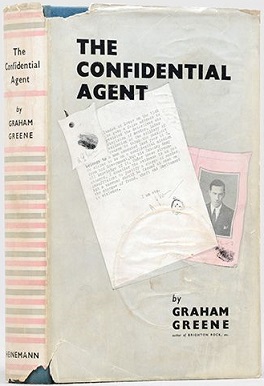
The Confidential Agent (1939) is a thriller novel by British author Graham Greene. Fuelled by Benzedrine, Greene wrote it in six weeks. To avoid distraction, he rented a room in Bloomsbury from a landlady who lived in a flat below him. He used that apartment in the novel and had an affair with the landlady's daughter. He wrote the book for money and was so displeased with his work that he wanted it published under a pseudonym. But critics took a far different view; The New York Times, for example, called the novel "a magnificent tour-de-force".

Stamboul Train is the second significant novel by Graham Greene. Set on a train journey from Ostend to Istanbul, the book was renamed Orient Express when it was published in the United States. The novel appeared in 1932 and was Greene's first true success. It was taken on by the Book Society and in 1934 adapted as the film Orient Express.

A Thief of Time is a crime novel by American writer Tony Hillerman, the eighth in the Joe Leaphorn/Jim Chee Navajo Tribal Police series, first published in 1988. It was adapted for television as part of the PBS Mystery! series in 2004.
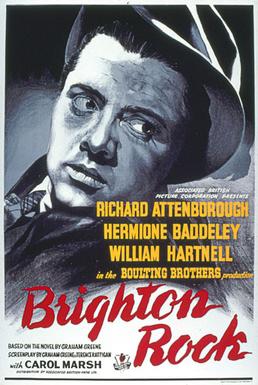
Brighton Rock is a 1948 British gangster film noir directed by John Boulting and starring Richard Attenborough as violent gang leader Pinkie Brown, Rose Brown as the innocent girl he marries, and Ida Arnold as an amateur sleuth investigating a murder he committed.

La Bandera is a 1935 French drama film directed by Julien Duvivier and starring Annabella, Jean Gabin and Robert Le Vigan. It was based on the 1931 novel La Bandera by Pierre Mac Orlan. After committing a brutal murder in Paris, a Frenchman flees to Barcelona where he enlists in the Spanish Foreign Legion. He is sent to fight in Morocco where he unexpectedly bonds with his comrades and marries a local woman before his past begins to catch up with him. Like Duvivier's other works of the period, the film is infused with poetic realism.

The Ministry of Fear is a 1943 novel written by Graham Greene. It was first published in Britain by William Heinemann. It was made into the 1944 film Ministry of Fear, directed by Fritz Lang and starring Ray Milland.

Gunsmoke is a 1953 American Western film directed by Nathan Juran and starring Audie Murphy, Susan Cabot, and Paul Kelly. The film has no connection to the contemporary radio and later TV series of the same name. The film was based on the 1951 novel Roughshod by Norman A. Fox.

It's a Battlefield is an early novel by Graham Greene, first published in 1934. Graham Greene later described it as his "first overtly political novel". Its theme, said Greene, is "the injustice of man's justice." Later in life, Greene classified his major books as "novels" and his lighter works as "entertainments"; he ranked It's a Battlefield as a novel and not a mere entertainment.
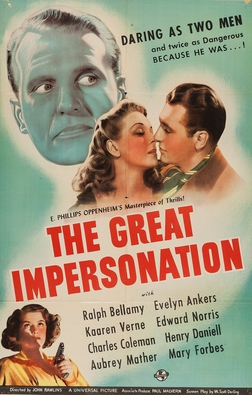
The Great Impersonation is a 1942 American thriller film directed by John Rawlins and starring Ralph Bellamy, Evelyn Ankers and Aubrey Mather. It is an adaptation of the 1920 novel The Great Impersonation by Edward Phillips Oppenheim with the setting moved from the early 1910s of the novel to the Second World War. It was made by Universal Pictures and was a remake of their 1935 film of the same name.

The Name of Action is Graham Greene's second novel, published in 1930. The book was badly received by critics, and suffered poor sales. Greene later repudiated the book and it has remained out of print ever since.

Spider Woman's Daughter is a crime novel by American writer Anne Hillerman, released in 2013. It is the first [[Leaphorn/Chee mystery written by her, the daughter of the series originator Tony Hillerman. The title of the book is derived from Native American legends. Spider Woman was the one who taught the Navajo people how to weave. Officer Bernadette Manuelito is the daughter of a weaver, and married to Officer Jim Chee. He nicknamed her "Spider Woman's Daughter" for her ability to weave together a complex array of evidence to solve a crime. In her debut effort to continue the series, Anne Hillerman has given the reader an exceptionally detailed plot and long list of characters. One reviewer at Goodreads.com counted 46 named characters.


















